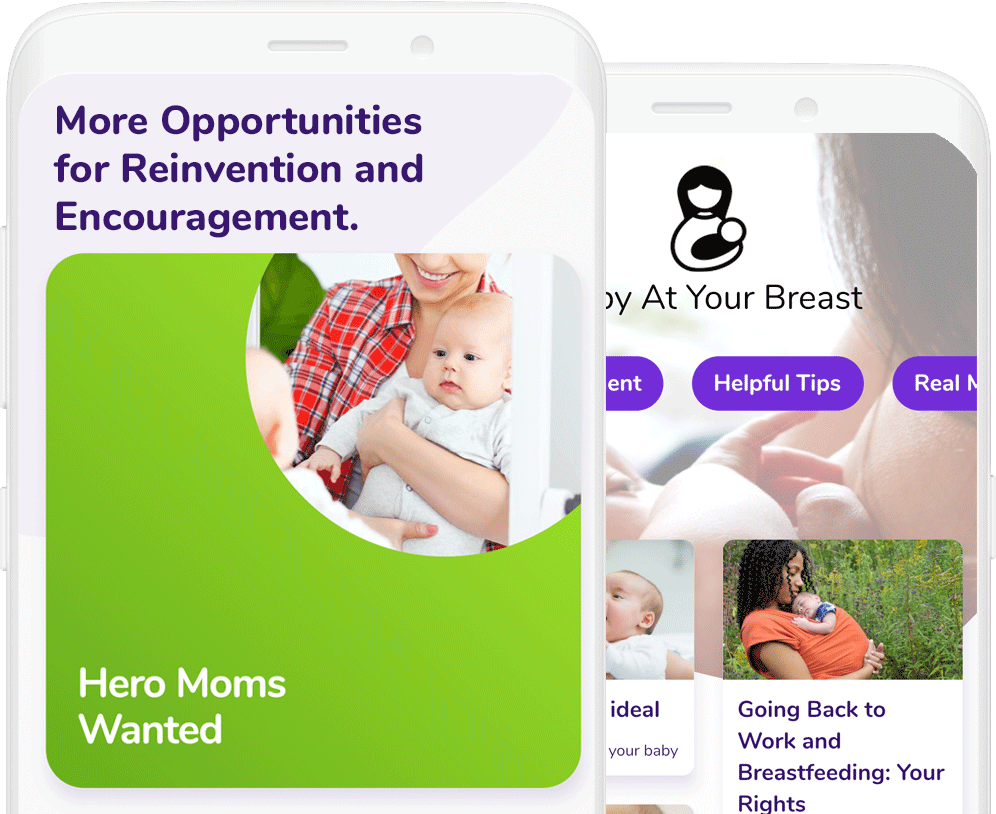Offering solid food to your baby is a big step that happens when your baby is around 6 months of age. When the time is right, how do you feel about offering your baby solid food?
Parenting is all about “wow” moments. Babies roll over - amazing! They grab and shake toys - miraculous! They sit up on their own - joyous! Moms celebrate sparks of independence and growth.
More “wow” moments happen when babies start eating solid foods. The same spark of independence that fueled earlier “wow” moments help babies learn how to bite, chew, suck, squeeze and drop food.
Baby-led feeding gives babies the freedom to explore, play or eat food at their own pace, starting around 6 months of age. Rather than conventional spoon-feeding of pureed foods, baby-led infants are offered soft, minced foods, so they can experiment with tastes, textures and colors of food.
How does baby-led feeding differ from traditional feeding? Here are few differences.
In the past, moms pureed foods and spoon-fed babies. They played food games like “Open your mouth for the airplane,” often with sound effects. They rewarded baby for eating with smiles and words, like “Good job,” or “You are a good eater!” They encouraged their baby to take “One more bite.”
When babies eat independently, they naturally learn to stop eating when full. Babies who self-feed learn to self-regulate, an important lifetime skill for healthy eating.
Baby-led feeding means offering solid foods in combination with breastmilk or formula. Solid foods complement but do not replace breastmilk or formula during the first year. Babies still rely on breastmilk and formula for the majority of their nutrition.
Moms have a lot of questions when it comes to feeding their babies. Some question the advantages of baby-led feeding. Some are concerned about potential choking. Others have questions about when their babies are ready for baby-led feeding.
Advantages of baby-led feeding: Research suggests baby-led feeding results in children who are less fussy about what they eat. They also seem to enjoy food more. A less fussy baby plus more enjoyment equals a happy mama.
Risk of choking: Babies allowed to lead their own feeding are no more likely to choke than those traditionally weaned. Parents still need to avoid offering foods that are a choking hazard. Avoid foods like hard candy, whole peanuts, grapes, peanut butter, popcorn and chunks of raw and hard fruit or vegetable.
When to start baby-led feeding: Babies who can sit up with minimal support may be ready for baby-led feeding. However, not all 6-month-old babies are developmentally ready for solid foods. If in doubt, talk to your health care provider.
First foods: Offer semi-solid foods that are soft and cooked with lumpy, finely minced or ground textures. Cooked foods like sweet potatoes, apples and broccoli florets are good choices. Raw, soft mango, banana, avocado and melons are also good choices.
Equipment needed: Nothing is absolutely necessary for baby-led feeding, but a high chair, baby eating utensils and bibs are helpful. No high chair? Your baby can sit on your lap. Babies’ fingers work well for feeding during the first months of eating solid food, but utensils may be welcome when babies are about 8 months old. Bibs are a mom’s best friend, along with a trash bag to cover floors.
The decision to use baby-led feeding techniques is just one of many that moms make in their babies’ first year. Be assured it is a gift that lasts a lifetime.
Which of these tips will take you closer to baby-led feeding?

You have completed your first MomCircle lesson! If you would you like to use this as your WIC nutrition education, either download the MomCircle app or contact your WIC clinic.



